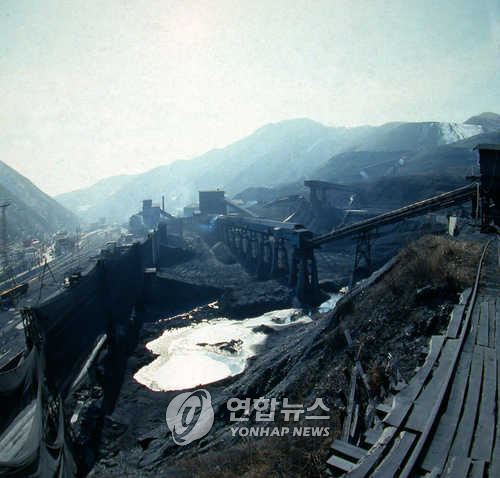South Korea's anthracite reserves dropped to about half of the country's annual consumption last year amid weak demand for coal, government data showed Monday.
The government currently has 899,000 tons of anthracite in reserves, about 52 percent of what the country uses on an annual basis.
 |
A file photo of a coal depot in Taebaek, Gangwon Province. (Yonhap) |
The figure is 10 percent of the 8.06 million tons stockpiled in 2003. The government began stockpiling coal in 1975 by establishing anthracite depots in five provincial cities -- Jeongseon, Gimje, Incheon, Taebaek and Hwasun.
The reserves rose to a record 8.06 million tons in 2003, more than double the yearly requirement.
Reserves have since fallen to 6.94 million tons in 2005, 3.44 million tons in 2007 and 1.59 million tons in 2009, as the country's hard coal consumption dropped drastically with the growing use of crude oil and liquefied natural gas for heating.
Industry sources expressed concerns about the declining reserves.
"The current level of anthracite reserves is well short of what is needed for emergency situations even if we consider the drop in consumption," an industry source said. "The government needs to set aside more coal as it is mostly used for the production of coal briquettes for low-income people." (Yonhap)






![[Exclusive] Hyundai Mobis eyes closer ties with BYD](http://res.heraldm.com/phpwas/restmb_idxmake.php?idx=644&simg=/content/image/2024/11/25/20241125050044_0.jpg)
![[Herald Interview] 'Trump will use tariffs as first line of defense for American manufacturing'](http://res.heraldm.com/phpwas/restmb_idxmake.php?idx=644&simg=/content/image/2024/11/26/20241126050017_0.jpg)
![[Herald Review] 'Gangnam B-Side' combines social realism with masterful suspense, performance](http://res.heraldm.com/phpwas/restmb_idxmake.php?idx=644&simg=/content/image/2024/11/25/20241125050072_0.jpg)